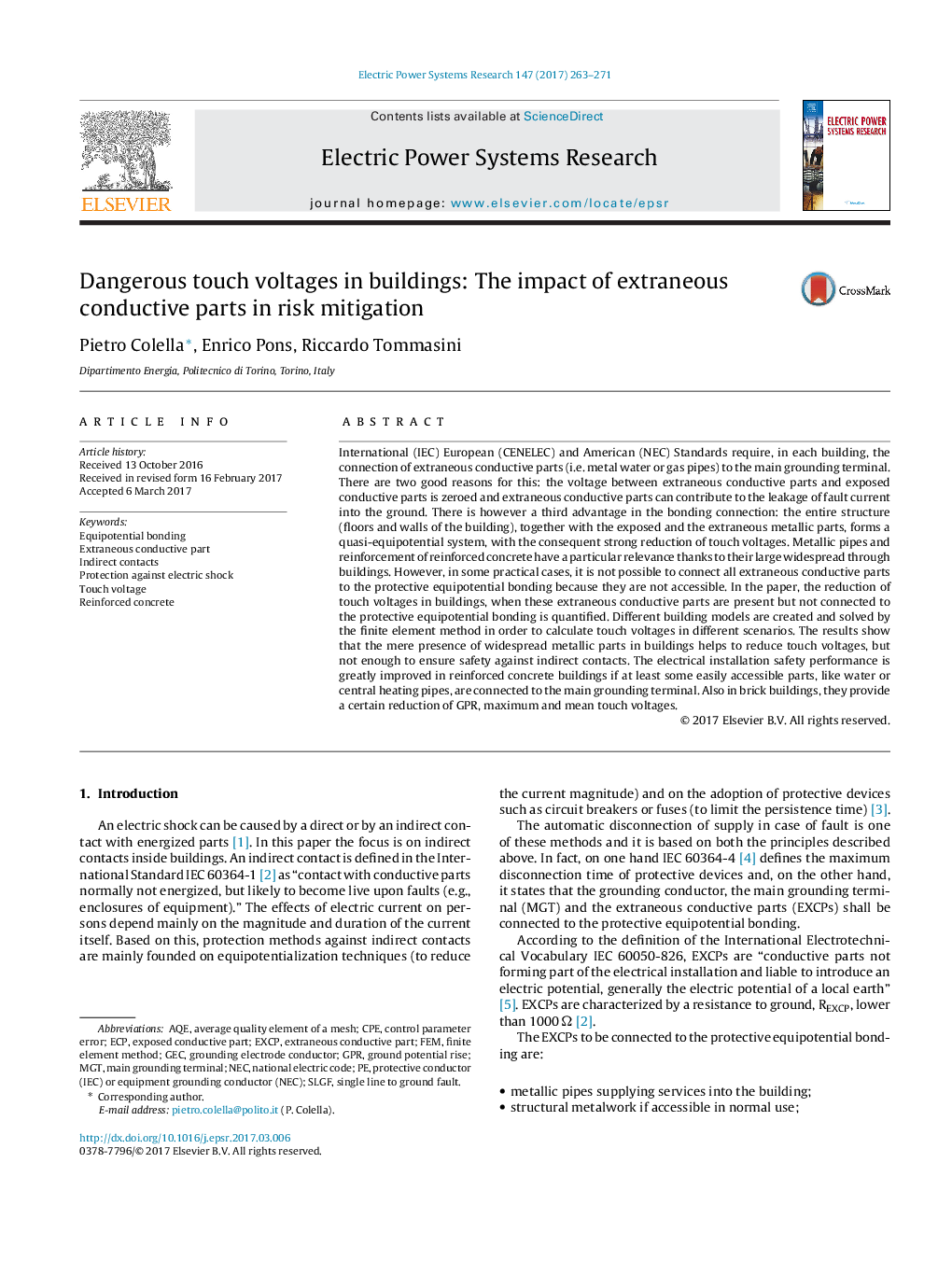| کد مقاله | کد نشریه | سال انتشار | مقاله انگلیسی | نسخه تمام متن |
|---|---|---|---|---|
| 5001192 | 1460866 | 2017 | 9 صفحه PDF | دانلود رایگان |
- Reinforced concrete and brick buildings are modeled with FEM.
- Touch voltage reduction due to embedded metallic parts is quantitatively analyzed.
- At least metallic pipes must be bonded to the earthing system to reduce touch voltages.
- Low touch voltages are obtained also if reinforcement of concrete is not bonded.
International (IEC) European (CENELEC) and American (NEC) Standards require, in each building, the connection of extraneous conductive parts (i.e. metal water or gas pipes) to the main grounding terminal. There are two good reasons for this: the voltage between extraneous conductive parts and exposed conductive parts is zeroed and extraneous conductive parts can contribute to the leakage of fault current into the ground. There is however a third advantage in the bonding connection: the entire structure (floors and walls of the building), together with the exposed and the extraneous metallic parts, forms a quasi-equipotential system, with the consequent strong reduction of touch voltages. Metallic pipes and reinforcement of reinforced concrete have a particular relevance thanks to their large widespread through buildings. However, in some practical cases, it is not possible to connect all extraneous conductive parts to the protective equipotential bonding because they are not accessible. In the paper, the reduction of touch voltages in buildings, when these extraneous conductive parts are present but not connected to the protective equipotential bonding is quantified. Different building models are created and solved by the finite element method in order to calculate touch voltages in different scenarios. The results show that the mere presence of widespread metallic parts in buildings helps to reduce touch voltages, but not enough to ensure safety against indirect contacts. The electrical installation safety performance is greatly improved in reinforced concrete buildings if at least some easily accessible parts, like water or central heating pipes, are connected to the main grounding terminal. Also in brick buildings, they provide a certain reduction of GPR, maximum and mean touch voltages.
201
Journal: Electric Power Systems Research - Volume 147, June 2017, Pages 263-271
